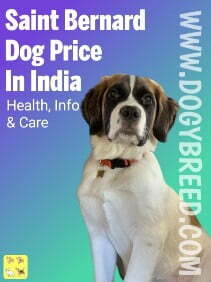As a devoted dog owner, one of your most important responsibilities is ensuring your canine companion receives the proper nutrition to thrive. With an overwhelming array of dog food options flooding the market these days, selecting the ideal diet can feel like a daunting task. Should you splurge on the fancy refrigerated fresh food? Opt for the trendy grain-free formulas? Or embrace the raw diet craze? Making the right choice hinges on understanding your dog’s individual needs and doing thorough research on ingredients and quality standards.
Tailor the Food to Your Dog’s Life Stage, Size, and Health
The very first factors to consider when choosing a dog food are your pet’s age, breed size, and any special health requirements. Puppies have vastly different nutritional needs than adult dogs to support their rapid growth and development. They require more calories and specific nutrient levels to build strong bones and muscles.
Large and giant breeds like Great Danes or Mastiffs may require specially-formulated diets to prevent issues like hip and elbow dysplasia. These foods are carefully balanced to control weight and stress on growing joints. On the other hand, smaller breed dogs tend to have higher metabolisms and may need more calorie-dense recipes.
As dogs enter their senior years, their dietary needs shift again. Senior formulas are typically lower in calories yet nutrient-dense to maintain muscle mass without adding excess weight that could strain aging joints and internal organs.
If your dog has any medical conditions like diabetes, kidney disease, food allergies, or osteoarthritis, you’ll need to find a therapeutic diet tailored for those needs. Don’t simply grab something off the shelf — consult your veterinarian to get a recommendation for the ideal food for managing your pet’s specific condition.
Scrutinize Ingredient Lists for Quality Protein, Fat and Carb Sources
Once you’ve narrowed it down by life stage, breed size and health status, you can start scrutinizing ingredient lists. This is where it gets tricky, as you’ll have to cut through the marketing hype and buzzwords to find a truly high-quality, balanced diet.
As a general rule, you’ll want to see a whole protein source like chicken, turkey, lamb, fish or beef listed as the first ingredient. Whole meats are preferable over meat meals or by-product meals, which can be of inferior quality. Avoid any food that simply lists a protein source as the first few ingredients without specifying whole proteins — you want real animal-based protein front and center.
Next, look for whole grains like brown rice, oats or barley if your dog isn’t sensitive to grains. These complex carbs provide energy, fiber and essential nutrients. If you opt for a grain-free formula, it should contain nutrient-rich vegetables like sweet potatoes, peas and lentils to fulfill the carb requirements.
Healthy animal or plant-based fats like chicken fat, salmon oil or flaxseed provide energy, aid nutrient absorption and contribute to skin and coat health. Just be wary of excessive fat levels that could pack on too many calories.
Finally, watch out for excessive amounts of fillers, by-products, artificial colors, flavors, and preservatives like BHA, BHT and ethoxyquin. While small amounts aren’t necessarily problematic, high-quality dog foods should rely predominantly on natural, whole ingredients whenever possible for optimal nutrition.
Explore Specialized Formulas for Your Dog’s Needs
Depending on your dog’s lifestyle, preferences and sensitivities, you may also want to explore specialized diets like weight management, performance, sensitive stomach or limited ingredient formulas.
If your dog is a highly active working or sporting breed, they’ll likely need a diet higher in protein and healthy fats to sustain their energy levels for vigorous exercise and activity. On the flip side, dogs prone to weight gain may do better on a lower-calorie, high-fiber formula.
Grain-free and limited ingredient recipes can be a good option for dogs with food sensitivities, allergies or inflammatory issues. Novel protein sources like duck, venison or salmon may also help alleviate allergies. Dogs prone to gastrointestinal upset often do well on diets containing pre- and probiotics, pumpkin and other gut-soothing ingredients.
A growing number of specialized diets like raw, dehydrated, freeze-dried, and fresh pet foods have gained popularity as well for owners seeking an ultra-premium, minimally-processed diet. However, be cautious with these nutritionally-dense options unless formulated by a qualified pet nutritionist, as improper balancing can lead to deficiencies.
Prioritize Brands With Rigorous Quality Control Standards
Once you’ve zeroed in on the type of formula, scrutinize the brand’s nutrition philosophy and quality control measures. Many reputable manufacturers adhere to nutritional adequacy standards set by the Association of American Feed Control Officials (AAFCO) and food safety regulations enforced by the Food and Drug Administration (FDA) and World Health Organization (WHO).
Other signs a brand prioritizes quality control:
- Conducting feeding trials with live animals to validate nutritional claims
- Rigorous microbial and pathogen screening protocols
- Tracing all ingredient sources to ensure proper handling and freshness
- Earning third-party food safety certifications like PAS 223 or 228
- Having stringent manufacturing processes and testing finished products
While these behind-the-scenes practices often aren’t obvious from a bag or can, you can generally find details about a company’s safety and quality assurance programs on their website. Reputable brands will be transparent and forthcoming about their testing and manufacturing standards.
Balance Nutritional Value With Long-Term Cost
Ultimately, high-quality dog foods formulated with premium ingredients and rigorous testing tend to come with premium price tags as well. It’s important to balance providing excellent nutrition with a cost you can reasonably sustain long-term.
During periods of financial strain, you may need to compromise by choosing a lower-cost food that still meets basic nutritional adequacy standards.
Just be wary of super bargain-basement generics heavily reliant on low-quality fillers, by-products and artificial preservatives to cut costs.
You’ll also want to factor in your dog’s size and appetite to calculate the true daily and monthly costs of a food. A large-breed dog that scarfs down four cups per day will tear through even a giant bag of food much faster than a toy breed eating 1/2 cup. And feeding multiple dogs amplifies the expenses even further.
Don’t feel obligated to purchase the most ultra-premium food on the market if it’s not realistically in your budget. With diligent research, you can likely find a quality brand that fits both your pet’s nutritional needs and your household finances. When you do splurge on the higher-end options, look for bulk-purchase discounts and subscription services to maximize your savings.
The “best” dog food is ultimately the one that provides complete, balanced nutrition from high-quality whole ingredients at a reasonable, sustainable cost for your family. By taking the time to understand your pup’s individual requirements and doing your homework on pet food companies, you can feel confident in your selection and your dog will be energized to thrive.




